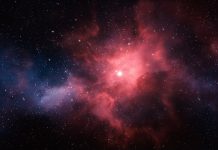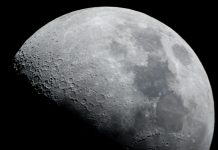A team of astronomers has identified a planet closer and younger than any other earth-sized world
HD 63433d
Named HD 63433d, this planet orbits a star, HD 63433, which maintains similarities to our sun but is just a fraction of its age. The findings explained in a recent study published in The Astronomical Journal, offer a unique opportunity to explore the evolution of terrestrial worlds and deepen our understanding of planetary formation.
Melinda Soares-Furtado, a NASA Hubble Fellow at the University of Wisconsin-Madison, and Benjamin Capistrant, a graduate student at the University of Florida and a recent UW-Madison graduate, co-led the study with contributions from researchers worldwide.
Soares-Furtado emphasises the significance of HD 63433d, stating, “It’s a useful planet because it may be like an early Earth.”
Key features of HD 63433d
Key features of HD 63433d include its extreme proximity to its star, achieving a full orbit every 4.2 days. Despite its close orbit, astronomers believe the planet could provide valuable insights into the evolution of terrestrial worlds by studying potential outgassing and atmospheric loss.
The unique conditions on HD 63433d, with one side perpetually facing its star and reaching scorching temperatures of 2,300 degrees Fahrenheit while the other remains in eternal darkness, are a scientific puzzle.
HD 63433, the host star, is similar in size and type to our sun but significantly younger, at approximately 400 million years old. Located about 73 light-years away in Ursa Major’s constellation, it is part of a group of stars, including the well-known Big Dipper.
Utilizing THYME
The discovery of HD 63433d was made possible through the collaboration of researchers involved in the THYME (Targeting Hot Young Stars with Modern Exploratory) planet-hunting project. Using NASA’s Transiting Exoplanet Survey Satellite (TESS) data, the team identified two mini-Neptune-sized planets orbiting HD 63433 in 2020. Further observations with TESS allowed them to detect HD 63433d as it crossed between the star and the satellite.
Future implications
The researchers, including graduate student Andrew C. Nine, undergraduate Alyssa Jankowski, and astronomy professor Juliette Becker from UW-Madison, are eager to delve deeper into the mysteries of HD 63433d.
Positioned for optimal observation from both the Northern and Southern hemispheres, the planet offers a unique opportunity for multiple devices, such as the South African Large Telescope and WIYN Observatory in Arizona, to study the system.
Soares-Furtado expresses excitement about the proximity of HD 63433, stating, “This is our solar backyard, and that’s kind of exciting.” The team is eager to explore what information a star in such close proximity within a crowded stellar system can reveal.
“This is our solar backyard, and that’s kind of exciting.”
The study of HD 63433d opens new avenues for developing methods to investigate gasses escaping from the planet’s interior and measure its magnetic field.
As scientists continue to unlock the secrets of this young exoplanet, the findings may pave the way for further discoveries among the numerous similar stars within its young stellar group. The research not only expands our understanding of planetary evolution but also provides a glimpse into the potential for life beyond our solar system.
Editor's Recommended Articles
-
Must Read >> Space exploration and the nature of the divine
-
Must Read >> Sustainable exploration in space benefits humanity














